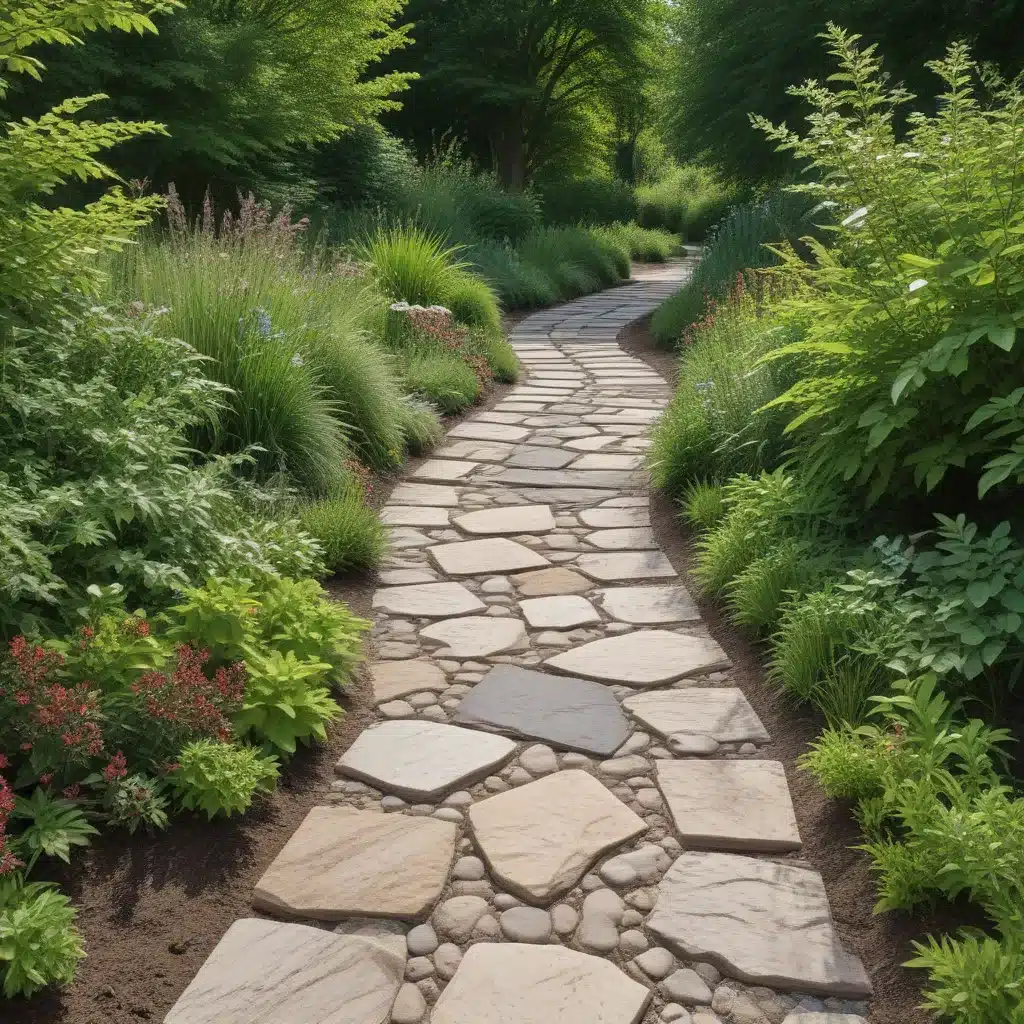
Landscape Design Principles
Well-designed pathways and walkways are the arteries that animate the landscape canvas, inviting visitors on a curated journey through the natural and cultivated scenery. At TriCounty Tree Care, our team of seasoned landscape architects understands the nuanced interplay between form, function, and aesthetics when crafting these vital landscape elements.
Pathways and Walkways
Fundamental to any successful landscape plan, pathways and walkways serve to direct circulation, provide accessibility, and enhance the overall visual composition. Whether paved in stone, brick, or decomposed granite, or delineated by soft, natural edging, these linear features must balance utility and artistry. Thoughtful placement, material selection, and edging treatment can imbue even the simplest walkway with a sense of elegant intentionality.
Formal Garden Design
In the context of more structured, formal garden designs, pathways often employ geometric patterns and symmetrical arrangements to create a sense of order and grandeur. Straight, parallel lines punctuated by perpendicular intersections evoke a sense of classical harmony, while curved, serpentine walkways lend an air of graceful fluidity. Framing these pathways with precisely pruned hedges, allées of stately trees, or rhythmic plantings elevates the ceremonial quality of the landscape experience.
Informal Garden Design
By contrast, informal garden designs leverage meandering, asymmetrical pathways to foster a sense of discovery and exploration. These naturalistic layouts capitalize on the landscape’s inherent topography, weaving through rolling hills, lush vegetation, and tranquil water features. Softly delineated edges, irregular paving materials, and an organic planting palette all contribute to the relaxed, picturesque ambiance.
Allee Design
One of the most captivating and iconic forms of landscape design, the allee is a linear planting of identical trees or shrubs flanking a central pathway or road. This deliberate, artistic arrangement serves both functional and aesthetic purposes.
Defining Allees
Allees are distinguished by their symmetry, repetition, and formality, creating a sense of grandeur and procession. Whether framing a stately manor, leading to a focal point, or simply demarcating a pedestrian throughway, these verdant corridors evoke a timeless elegance.
Allee Planting Schemes
The species selection for an allee is crucial, as the trees or shrubs must be uniform in size, shape, and growth habit to maintain the desired visual harmony. Common allee plantings include stately oaks, towering lindens, graceful crape myrtles, or evergreen conifers like Italian cypresses. Careful spacing and pruning ensure the plants develop consistent canopies that create an enveloping, tunnel-like effect.
Allee Functionality
Beyond their aesthetic appeal, allees serve important practical functions. The linear arrangement and overhead canopy provide shade, shelter, and wind protection for pedestrians and vehicles. Allees also delineate circulation routes, direct views, and frame architectural or natural focal points, enhancing the overall landscape experience.
Landscape Artistry
At the heart of any captivating landscape design lies the artful composition of its various elements. Like a painter’s canvas, the landscape provides a dynamic, living medium for designers to cultivate visual harmony, sensory stimulation, and emotional resonance.
Artistic Landscape Composition
Skilled landscape architects employ principles of design – balance, proportion, rhythm, emphasis, and unity – to orchestrate the placement, scale, and interplay of hardscape features, plant material, and sculptural elements. The judicious use of negative space and strategic sightlines create a sense of depth, movement, and intrigue** that captivates the observer.
Texture and Color in Landscape
The considered application of textural contrasts and vibrant hues imbues the landscape with visual dynamism and richness. Smooth, polished stone pathways may be punctuated by rough-hewn boulders or billowing grasses; evergreen foliage can provide a solid backdrop for the fiery display of autumn leaves or the delicate blooms of spring perennials.
Capturing the Canvas
Ultimately, the landscape architect’s role is to curate a multisensory experience that resonates with the viewer on an emotional and intellectual level. By thoughtfully orchestrating the interplay of form, function, and aesthetic, they craft a living canvas that captivates, inspires, and enlightens all who traverse its pathways.
Captivating Landscape Experiences
The most successful landscapes are those that engage the visitor, stimulating the senses and evoking a meaningful emotional response. Careful consideration of user experience and sensory design principles elevates the landscape from a mere backdrop to a transformative, immersive environment.
Visitor Engagement
Landscapes that foster a sense of discovery and exploration encourage visitors to linger, meander, and interact with their surroundings. Strategically placed focal points, vista corridors, and branching pathways invite the observer to investigate further, while interpretive signage and interactive features deepen their understanding and appreciation of the landscape.
Sensory Stimulation
By engaging the full spectrum of human senses – sight, sound, touch, smell, and even taste – landscape designers can create profoundly memorable experiences. The dappled light filtering through a canopy of rustling leaves, the soothing melody of a bubbling stream, the tactile allure of sculpted hedges or smooth stone – these sensory details captivate the visitor and foster a sense of deep connection with the landscape.
Emotive Responses
Ultimately, the most impactful landscapes are those that evoke a strong emotional response within the observer. Whether a sense of awe at the grandeur of a formal allee, a feeling of tranquility amid a naturalistic garden, or a surge of inspiration from an artfully composed vista – these transformative experiences linger in the visitor’s memory, enriching their relationship** with the natural world.
At TriCounty Tree Care, our team of landscape design experts leverages a deep understanding of horticultural principles, an eye for artistic composition, and a keen focus on user experience to craft captivating, functional, and ecologically vibrant landscapes. Contact us today to learn how we can transform your outdoor spaces into a living, breathing work of art.


